What's a tornado watch? How's it different from tornado warning? 12 things you should know
In the United States, Tornado Alley is well known for the powerful and destructive tornadoes that devastate communities.
But Florida is no stranger to tornadoes. In fact, the Sunshine State has more tornadoes per 10,000 squares than any other state, according to the Florida Climate Center.
So knowing the difference between a tornado watch and tornado warning, and what you should do in case of a tornado is just as important as knowing how to prepare for a hurricane. Here's what you should know.
What is a tornado watch?
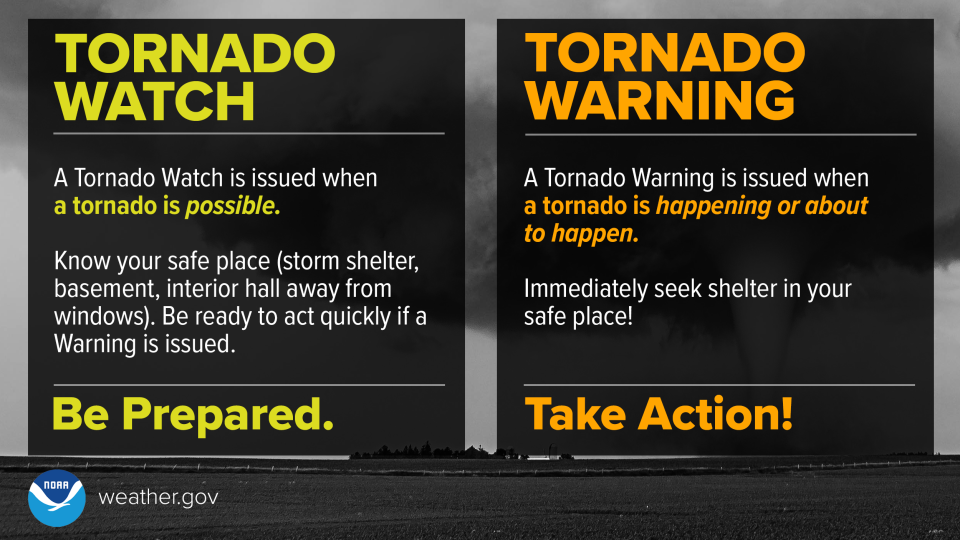
A tornado watch is issued when tornadoes are possible in and near the watch area, according to the National Weather Service.
Watches are issued by the Storm Prediction Center for counties where tornadoes may occur. The watch area is typically large, covering numerous counties or even states.
What should you do if a tornado watch is issued?
Here's what you should do if a tornado watch is issued for your area:
Review and discuss your emergency plans.
Take inventory of your supplies and check your safe room.
Be ready to act quickly if a warning is issued or you suspect a tornado is approaching.
What is a tornado warning?
A tornado warning is issued if a tornado has been sighted or indicated by weather radar. There is imminent danger to life and property.
Warnings typically encompass a much smaller area (around the size of a city or small county) that may be impacted by a tornado identified by a forecaster on radar or by a trained spotter/law enforcement who is watching the storm.
Warnings are issued by local forecast offices.
What should you do if a tornado warning is issued?
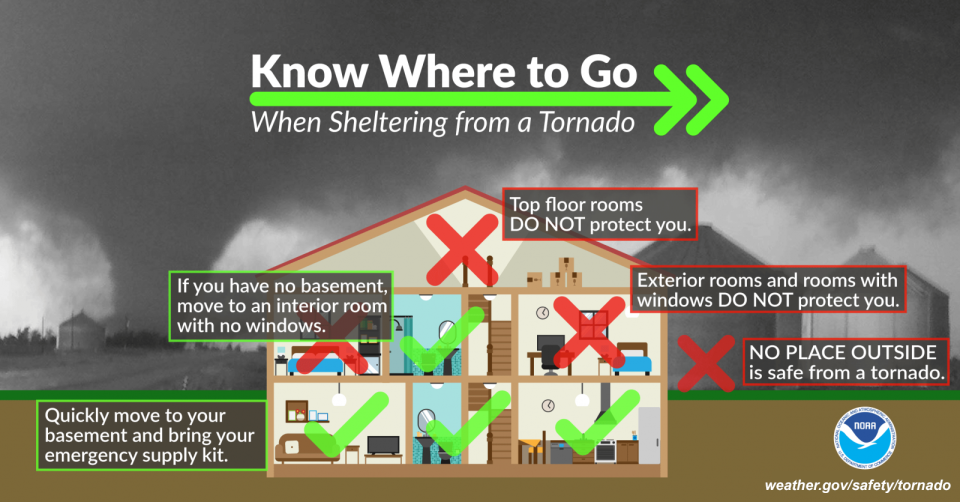
If a tornado warning is issued, the National Weather Service recommended:
Move to an interior room on the lowest floor of a sturdy building.
Avoid windows.
If in a mobile home, a vehicle, or outdoors, move to the closest substantial shelter and protect yourself from flying debris.
What's a tornado emergency?
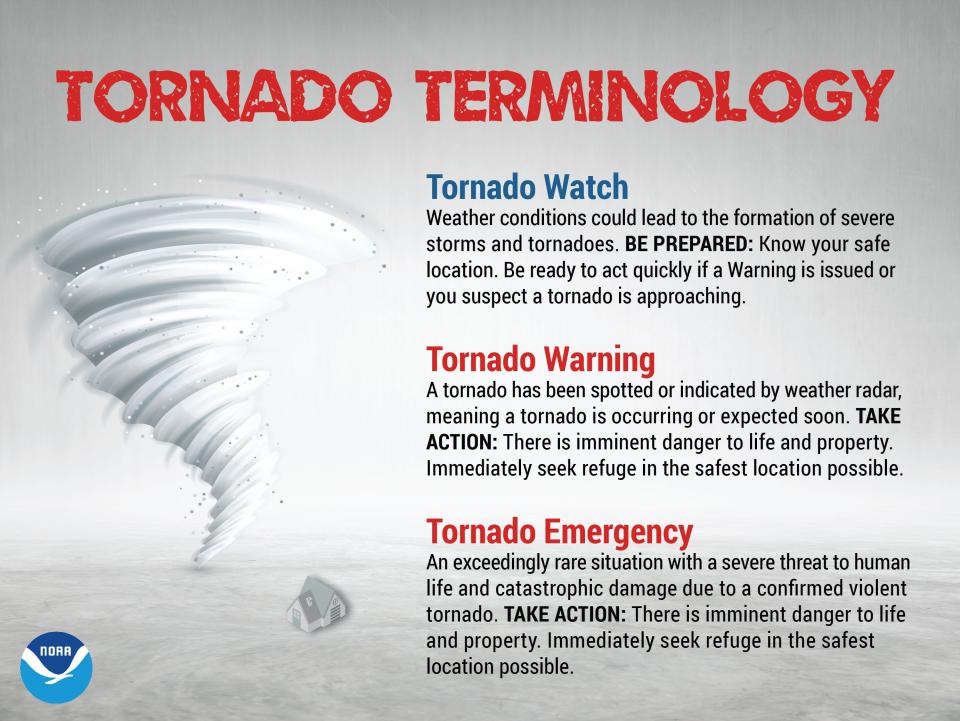
A tornado emergency is the National Weather Service’s highest alert level.
It is issued when a violent tornado has touched down in the watch area.
There is a severe threat to human life and property, with catastrophic damage confirmed.
What should you do if a tornado emergency is issued?
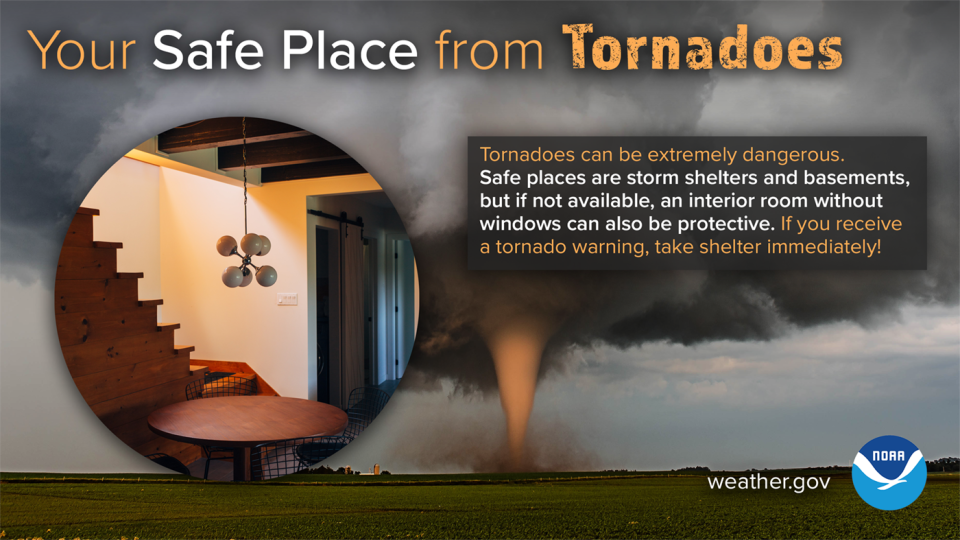
Immediately seek refuge in the safest location possible.
Call friends and family who are within the watch area to ensure they are aware of the situation.
If you see a tornado approaching, do not attempt to outrun it in a vehicle; shelter in place.
Once safe, be sure to monitor your local forecast for the latest updates.
What is a tornado?
The simplest explanation is that a tornado is a violently rotating column of air that is spawned by a severe thunderstorm, according to the National Weather Service.
It connects from the thunderstorm to the ground and often appears to have a funnel or column shape.
"A tornado, one of nature's most violent storms, can develop suddenly, and have winds in excess of 250 mph."
Does Florida have tornadoes?
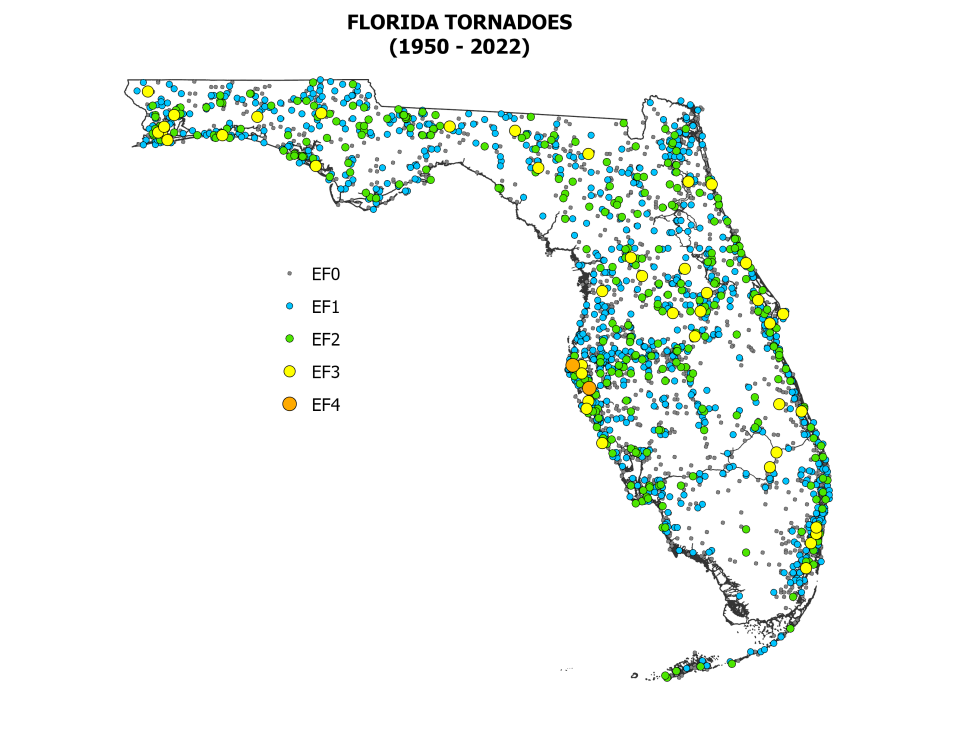
Florida does have tornadoes. Lots of them.
"Florida has a higher frequency of tornadoes than any other state in the Southeast. Florida has the dubious distinction of having a higher frequency of tornadoes per 10,000 square miles than any other state, including Oklahoma," according to the Florida Climate Center.
When do most Florida tornadoes happen?
Truly destructive tornadoes are most frequently reported in Florida during the spring and summer. The most powerful usually strike in spring, the Florida Climate Center said.
In Florida, measured in frequency of tornadoes for every 10,000 square miles, the coast between Tampa Bay and Fort Myers has a particularly high incidence, as do the western Panhandle and parts of the Atlantic Coast.
While tornadoes can occur at any time of the year in Florida, they tend to be less common in late fall and winter.
June sees the highest frequency of tornadoes, on average, while November typically has the least number of tornadoes, based on tornadoes reported from 1950 to 2022.
The strongest tornadoes, EF-4 and EF-5, are uncommon in Florida. EF-3 tornadoes have occurred in nearly every month of the year and the state is not immune to deadly tornadic outbreaks, the Florida Climate Center said.
Where do Florida tornadoes come from?
According to the Florida Climate Center, tornadoes in Florida generally form:
Along a squall line ahead of an advancing spring cold front from the north.
Along the squall lines in areas where masses of warm air converge.
From isolated local summer thunderstorms.
Within a hurricane.
How are tornadoes measured?
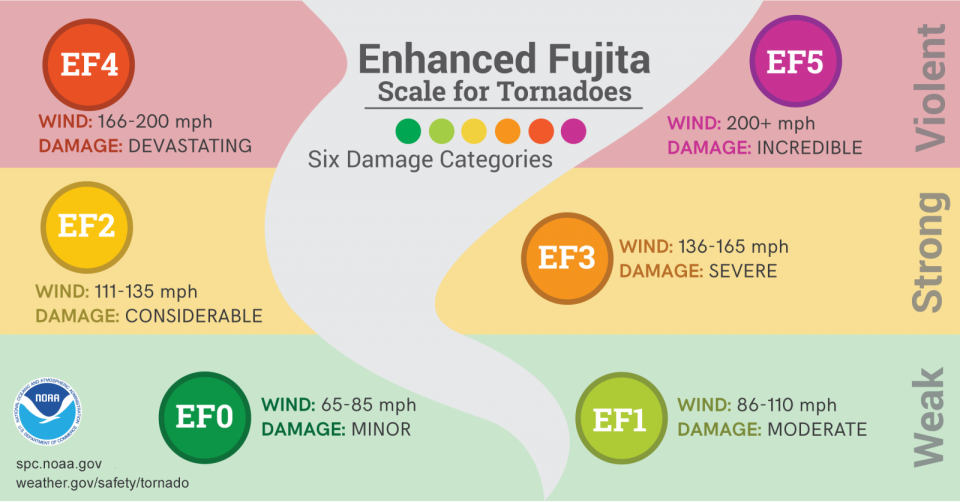
Tornadoes are measured with the Enhanced Fujita Scale, which estimates tornado wind speeds based on damage left behind.
The Enhanced Fujita Scale replaced the original Fujita Scale in 1971.
EF-0: Winds of 65-85 mph
EF-1: Winds of 86-110 mph
EF-2: Winds of 111-135 mph
EF-3: Winds of 136-165 mph
EF-4: Winds of 166-200 mph
EF-5: Winds higher than 200 mph
How do tornado wind speeds compare to hurricanes?
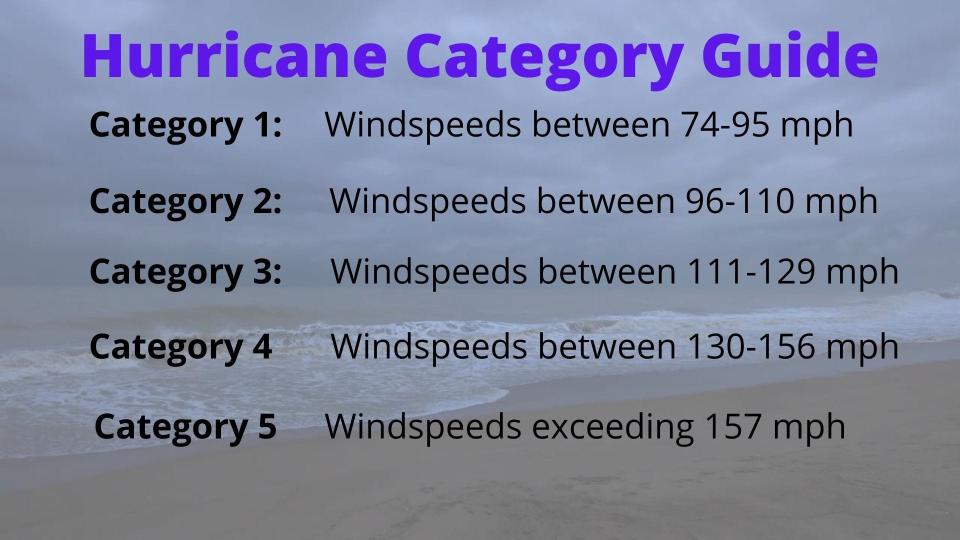
Hurricanes are measured by category on the Saffir-Simpson Hurricane Wind Scale based on maximum sustained winds.
Category 1: Winds at 74-95 mph.Category 2: Winds at 96-111 mph.Category 3: Winds at 111-129 mph.Category 4: Winds at 130-156 mph.Category 5: Winds highers than 156 mph.
This article originally appeared on Treasure Coast Newspapers: Tornado watch vs warning: What should you do. Florida tornadoes

